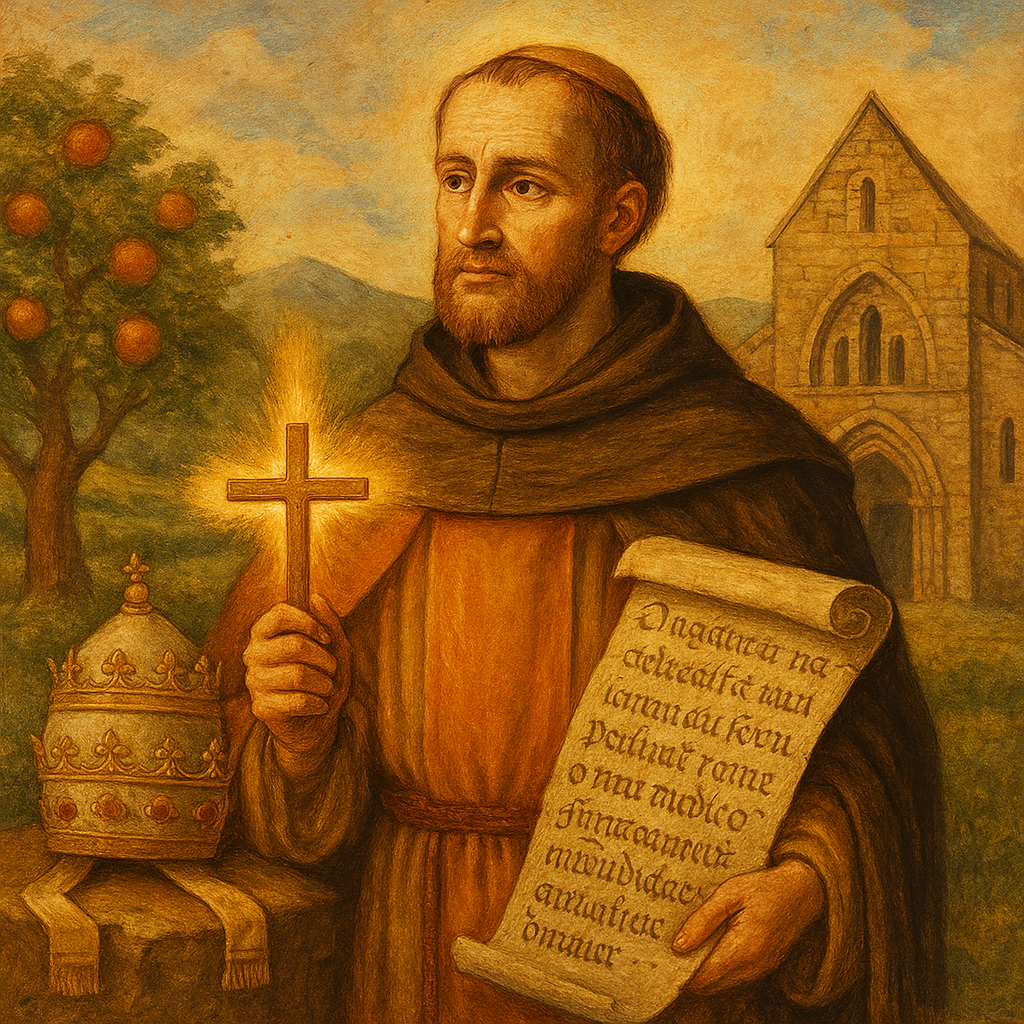
Saint Malachy: Reformer, Miracle-Worker, and the “Last Pope” Prophecy
Introduction
Few saints ignite curiosity like Saint Malachy. The twelfth–century Irish bishop renewed a struggling Church, worked miracles that echoed across Europe, and—according to legend—left behind the famous “Prophecy of the Popes,” 112 short Latin mottos said to predict every pontiff up to a final “Peter the Roman.”
But what is fact and what is folklore? And above all, what can Malachy’s life teach today’s Catholics who simply want to deepen their faith?
1. Ireland in Crisis and the Arrival of a Reformer
When Malachy (born Máel Máedóc Ua Morgair, 1094) first looked at the Church in Armagh, he found weary clergy, blurred Celtic customs, and sacraments seldom celebrated.
- Hands-on rebuilding: Ordained at twenty-five, he restored Bangor’s little church with stones he hauled himself.
- Sacramental revival: He re-established Confession and Confirmation; people queued for hours to receive the rites in clear, solemn Latin.
- Mission on horseback: Malachy crossed icy rivers to baptize infants and left behind trained choirs and hand-copied missals—seeds of lasting reform.
2. Miracles, Friendships, and Temporary Exile
During a devastating famine Malachy planted apple trees that, locals swore, fruited within a single season, feeding entire villages.
A pilgrimage to Rome brought him into lifelong friendship with Saint Bernard of Clairvaux. Letters show mutual admiration: Bernard praising Malachy’s tireless charity, Malachy marveling at Bernard’s brilliant mind.
Malachy’s fame grew when he prayed over Scotland’s Prince Henry, gravely ill—chroniclers say the boy recovered overnight. Yet Irish politics forced the bishop into exile; he used the time to write spiritual guidelines that still inspire monastic life. Summoned home at last, he returned to Armagh in a torchlit procession, ready for the chapter that would brand him a prophet.
3. The Enigmatic Prophecy of 112 Popes
Tradition holds that during prayer in Rome, Malachy saw a vision of future popes and penned 112 cryptic mottos. Lost for centuries, the manuscript surfaced in 1595 when Benedictine scholar Arnold de Wyon published it—sparking fascination and alarm.
Some lines fit strikingly well: “Labor of the Sun” for John Paul II, born and buried on eclipse days; “From the Half-Moon” for John Paul I, elected between two crescents.
Yet researchers note red flags:
- Saint Bernard’s detailed biography never mentions a prophecy.
- Linguistic tests detect Renaissance turns of phrase unusual for medieval Latin.
- Multispectral scans show corrections and multiple inks on early copies.
The Church therefore treats the list as a private, non-binding revelation. Salvation rests on Christ, not on timetables.
4. Death, Relics, and a Swift Canonization
Sensing his end, Malachy traveled to Clairvaux and died on All Souls’ Day 1148, holding a plain wooden cross.
- Immediate healings were reported: a novice cured of seizures, a blind monk claiming sudden sight.
- Canonized in 1190—an unusually quick process—Malachy became the first formally recognized Irish saint.
- His relics spread across Europe; brave laypeople hid them during the French Revolution, preserving his memory through turmoil.
5. Legacy That Outshines the Prophecy
Malachy’s lasting gifts far exceed any list of papal riddles:
- Mellifont Abbey, the first Cistercian house in Ireland, became a model for monastic architecture and community life.
- The Synod of Kells-Mellifont (1152) completed the diocesan map still used in Ireland today—built on Malachy’s groundwork.
- The thrice-daily ringing of the Angelus gained new footing in Irish parishes he visited.
Every 3 November, pilgrims in Belfast still pin prayers to a wooden cross near his shrine—a living sign that sanctity is practical, not theoretical.
Conclusion
The “Prophecy of the Popes” may entertain thriller writers and headline makers, but it is not the heart of Saint Malachy’s story. His true prophecy was lived out in rebuilt churches, fed bellies, and renewed sacramental life.
For us, the message is clear: while rumors of a “last pope” come and go, the Catholic Church continues her long journey—calling each generation to conversion and hope.
May Malachy’s example remind us that real prophecy happens whenever ordinary believers choose confession, charity, and courageous reform—acts that echo far louder than any mysterious list.
Connect with Us!
Explore more Catholic content and support our mission:
